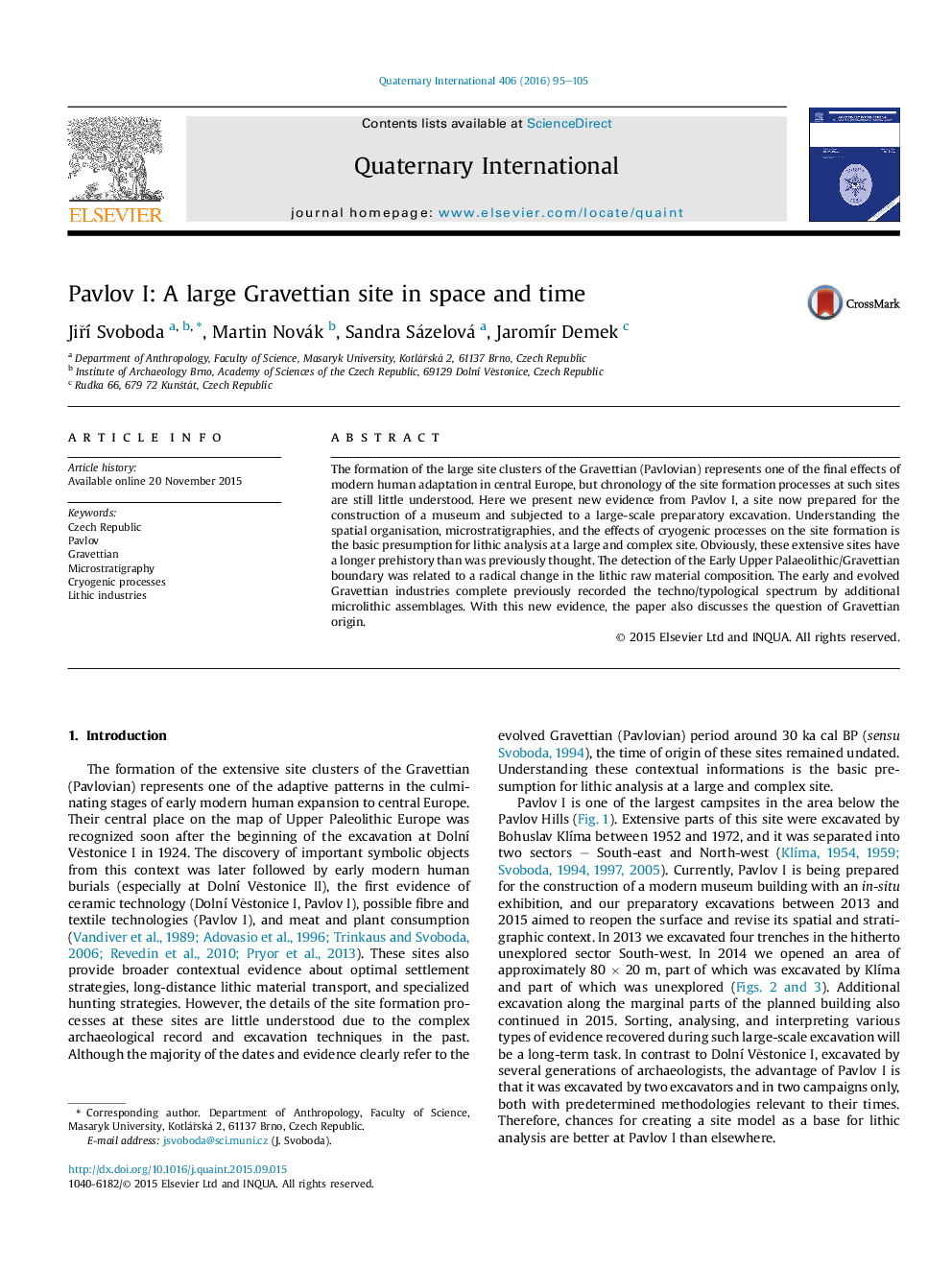| Article ID | Journal | Published Year | Pages | File Type |
|---|---|---|---|---|
| 1039969 | Quaternary International | 2016 | 11 Pages |
The formation of the large site clusters of the Gravettian (Pavlovian) represents one of the final effects of modern human adaptation in central Europe, but chronology of the site formation processes at such sites are still little understood. Here we present new evidence from Pavlov I, a site now prepared for the construction of a museum and subjected to a large-scale preparatory excavation. Understanding the spatial organisation, microstratigraphies, and the effects of cryogenic processes on the site formation is the basic presumption for lithic analysis at a large and complex site. Obviously, these extensive sites have a longer prehistory than was previously thought. The detection of the Early Upper Palaeolithic/Gravettian boundary was related to a radical change in the lithic raw material composition. The early and evolved Gravettian industries complete previously recorded the techno/typological spectrum by additional microlithic assemblages. With this new evidence, the paper also discusses the question of Gravettian origin.
